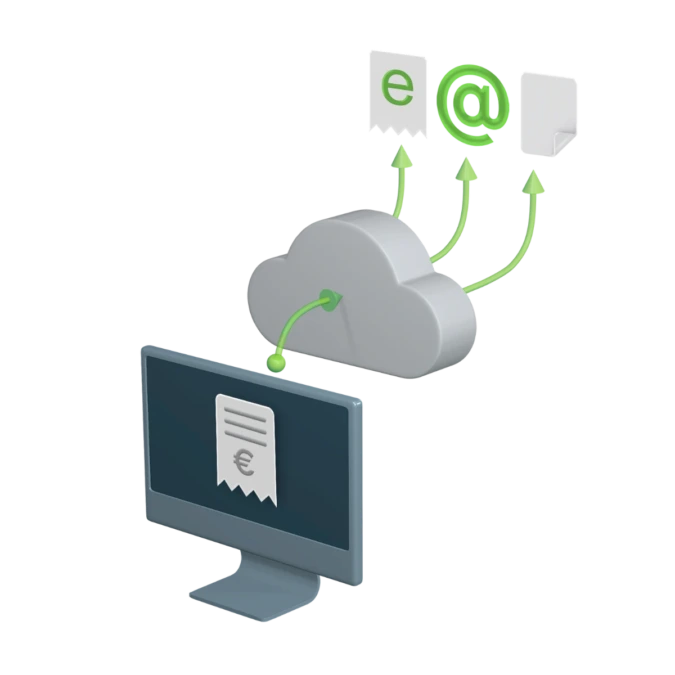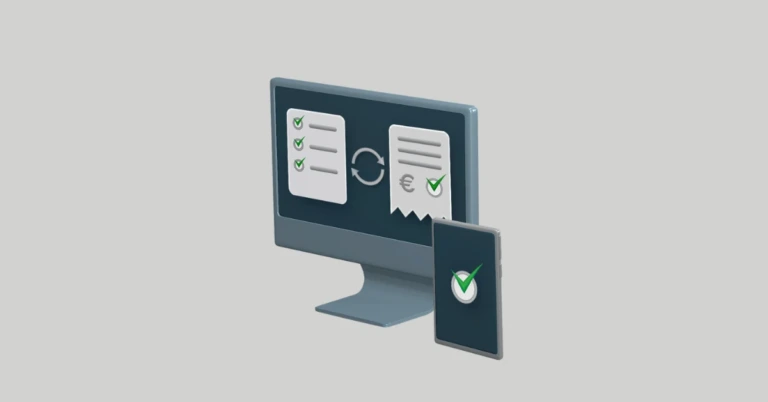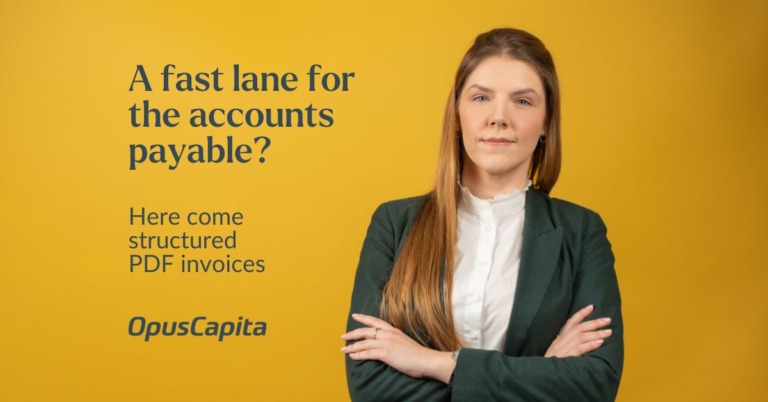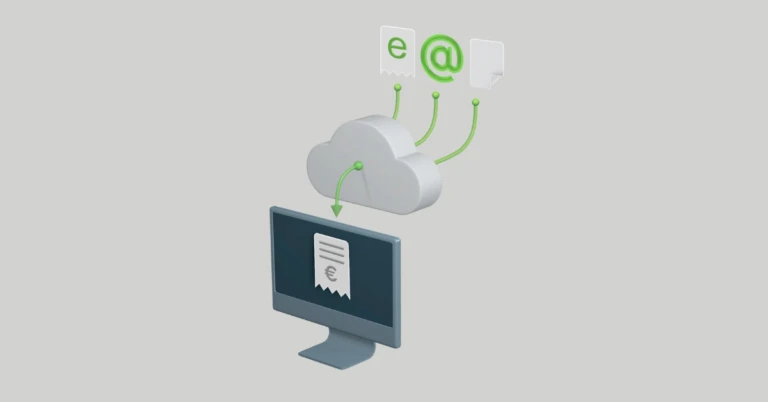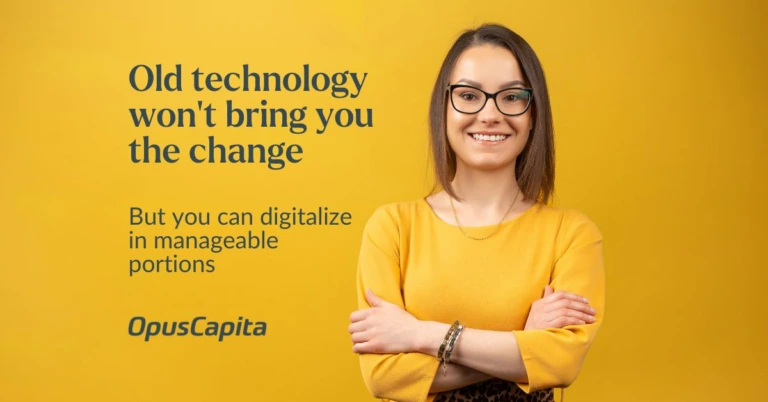
How to cut down your cost of invoicing
Now more than ever, there’s clear pressure on the accounts receivable to lower the cost of invoicing. Investing in e-invoicing is bound to result in such high savings in speed, labor and postage costs that figuring out whether the ROI is worth it, is a no-brainer. Yet many companies still use traditional invoicing practices and accept the direct and indirect costs that entail.
Let us have a closer look at what those costs are and what can be done about them.
Direct cost of invoicing
The most expensive – and slow! – way to do invoicing is paper invoices.
Direct cost of sending out a paper invoice varies between 6 to 9,65 euros. That includes the costs of invoice preparation, printing, paper and envelopes, labor such as folding papers and putting them into envelopes, and finally, the postage fees.
These costs vary due to several factors, such as the industry, company size, number of invoices, geographical location, etc. However, each estimate shows that the invoicing cost can be significantly lower when made electronic and automated.
Hidden invoicing costs
There are also hidden and indirect costs that affect your overall cost of invoicing. In most organizations, handling late payments and correcting invoicing errors make up most of these. Depending on the volume of invoices your organization issues every month, archiving and storing paper invoice copies may also add to your overhead costs.
Late payments affect your cash flow
Late payments are a problem for most businesses selling on payment terms. On average, about 39% of all invoices are paid late, and many accounts receivable teams have witnessed a significant rise in overdue invoices since the Covid-19 pandemic.
“About 39% of all invoices are paid late.”
For every paper invoice produced, 0,34 payment reminders are sent. For an emailed PDF invoice, it is 0,28 sent reminders – and for an e-invoice, 0,1. The difference is significant because an issue with an invoice can mean the invoice cycle will start again. At worst, a customer lets the supplier know the invoice is incorrect close to the payment date which starts the clock again to collect your money.
Late payments affect your cash flow. They generate extra work in producing reminders and add to costs for debt collection. Delayed payments evidently mean longer DSO (Days Sales Outstanding), which in turn results in more hidden costs, for example, in the form of higher finance and credit insurance costs.
Invoicing errors
Statistics show that 96% of all companies have had to re-issue invoices in the past months. That’s almost every single company out there. When looking at paper invoices specifically, 8-10% of all paper invoices contain errors, and 10-40% of all paper invoices come into dispute.
Errors in invoicing usually set off the whole process of handling customer complaints, clarifying what happened, issuing credit notes, and matching and reconciling additional documents and transactions. Invoicing errors typically affect multiple functions in an organization, including finance, credit control, operations, distribution, customer service, and even sales.
“That totals up to a whopping 28 euros per paper invoice.”
If the direct cost of a paper invoice was at the lowest 6 euros, the average cost of resolving a paper invoice dispute is 22 euros. That totals up to a whopping 28 euros per paper invoice. If you send out, say, 12,000 invoices per year, and even 25% of those are paper – that gets expensive!
Security and sustainability
Sending an invoice electronically is significantly safer today than shipping a paper invoice. First, it also reduces the risk of it being mistaken for a fraudulent invoice. Second, a cold fact is that paper and even email invoices get lost as we speak. The fact that 82% of finance departments report being overwhelmed by the number of invoices they must process daily, doesn’t exactly add to safety.
“Reducing your carbon footprint may just be the most important reason of them all.”
Further, 60-80% of all office waste ends up being paper.
10% of the trees that anyone in the world cuts down become paper for invoices. The disproportionate amount of energy required to produce it equals the annual consumption by 20 million households.
When calculated for a company that sends out those 12 000 paper invoices per year, they could save;
- 57,6 trees
- 15,8 tons of Co2
- 190 tons of water
Cost of invoicing aside – reducing your carbon footprint may just be the most important reason for them to go digital. Switching to e-invoicing means no unnecessary paper prints and fewer transports on the roads.
E-invoicing cuts down your cost of invoicing
The quicker your invoices are sent to your customers, and the more accurate they are, the faster you will get paid. That’s why today, all invoicing should be automated and electronic.
E-invoicing cuts down the direct costs of invoicing by automating invoice preparation and eliminating costs related to printing, use of paper, and postage. It also simplifies account reconciliation and requires less storage resources for archiving.
Further, 90 % of e-invoices are paid on time, compared to 71% for emailed PDF invoices and 66% for paper invoices. E-invoices come with a lower risk of manual payment errors or delays due to high workloads, vacations, etc. You will collect your payments faster, cash flow will be less of a worry, and you can spend less time chasing late payments.
“90 % of e-invoices are paid on time, compared to 71% for PDFs and 66% for paper.”
If the cost of a paper invoice was 28 euros per invoice, the absolute maximum for an e-invoice is 3,91 euros – and truthfully, in reality, we usually talk about cents rather than euros for the price of an electronic transaction. Multiply that by our example, 12,000 invoices per year, out of which 25% were paper, and now you go to full e-invoicing – and your annual savings are around 180,000 euros. You end up saving money even if you first invest in a full-service, turnkey implementation project for a new invoicing solution.
Gradual transition to e-invoicing
So, what if you would love to implement e-invoicing, but some of your customers are still requesting PDF or paper? Handling multiple invoicing channels, all routing information, and ever-changing e-invoicing formats can be a challenge.
Fortunately, a multi-channel invoicing solution automatically creates and sends out your invoices however your customers want them:
- If your customer can receive e-invoices, their invoices are delivered electronically. This is done using the best network interoperability option and e-invoice format, detected by intelligent routing.
- If an e-invoice can’t be sent, the service looks for an email address, creates a PDF invoice, and sends it as an email attachment.
- If no email address is found, or paper is demanded, the service turns to traditional delivery using iPost, internet bank, or as a last resort, paper via landmail.
Over time, this “e-invoice first” ideology will maximize your share of e-invoices. As soon as your customer has the ability to receive electronically, our service automatically detects it, and switches to e-invoicing. With zero effort needed from you.

Would you like to cut down your cost of invoicing?
Discover the OpusCapita Invoice Sending solution. It automatically delivers all your sales invoices directly from your ERP in all invoicing channels and formats – however, you and your customers prefer it.
